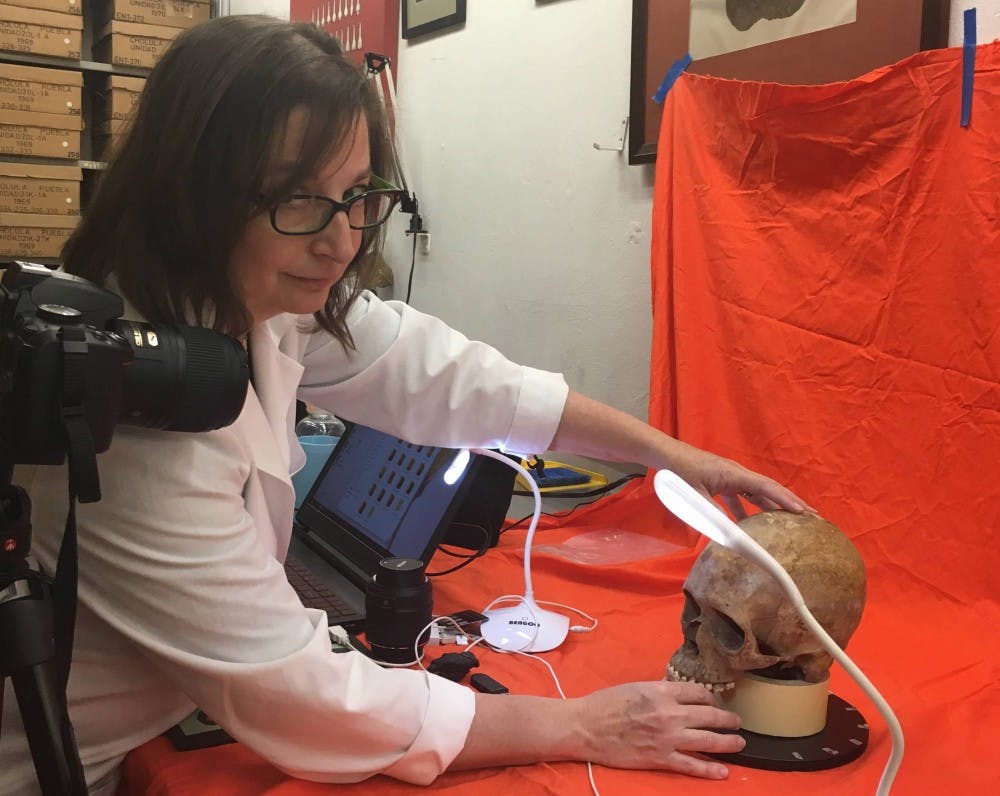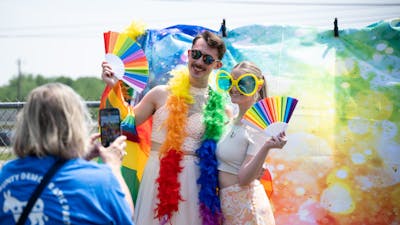Q&A: Anthropology faculty member discusses her books, road to becoming a professor
Cathy Willermet is going on 11 years at CMU as anthropology professor
When Cathy Willermet started her undergraduate degree, she had no inclination of becoming an anthropologist. But a general education course spiked her interest and led her on a prolonged path to becoming an anthropology professor at Central Michigan University.
The sociology and anthropology faculty member has worked at CMU for 10, going on 11 years. She received her Bachelor of Arts degree in anthropology at the University of Michigan and continued her education by obtaining a Masters and PHD in Biological Anthropology at Arizona State University.
Willermet wanted to interact with people from different places and bring connections from their culture and vice versa. She eventually realized she was beginning to think like an anthropologist. Willermet sat down with Central Michigan Life to discuss her path to teaching anthropology, and what sparked her interest in the subject.
What inspired you to become a professor?
Willermet: Quite honestly, I guess I always wanted to teach because the reason I wanted to go into museums was to translate science to the public. There is just nothing like the connection. The most amazing feeling is when you are talking about something and you see the student sometimes jerk a little like, “Oh my gosh!” when they understand what you are saying and it makes your heart sing. It is unbelievable.
I feel like I am doing something, not necessarily changing minds, but giving people the confidence to trust their critical thinking skills and go off to do whatever it is that they are going to do.
Would you do anything to change the path you took to becoming a professor?
I had a circuitous path to becoming a professor, which is very common. I met my husband before I was finished with grad school, and he and I got married. After this point we had two kids and we had jobs, but we weren’t yet professors.
We were teaching at community colleges, doing stuff, but it wasn’t 100 percent what we wanted to do. We moved two different times, but both for his job.
This was our third move to find a place for me since he always had a place. We had to find a job for me or I had to stop being an anthropologist, basically.
I was fixed term faculty for about 15 years. I started here – at CMU – in 2008 and was fixed term for one year and this past fall was my 10 year anniversary. I’m going up for promotion this year and I will become a senior faculty and not junior faculty.
I wouldn’t change having kids, I wouldn’t change meeting my husband and so it is the path it was. You walk the path that is in front of you and so this is what we did.
It would have been nice had we been able to find one spot and be moving up this whole time, but we did it and that was our path. I wouldn’t have had the experiences I had if I didn’t stick to this path.
What was your most impactful dig that you were a part of?
Willermet: I went to the Smithsonian as a master student with a focus on museum studies. I was interested in raising collections. At the time, I was thinking I didn’t want to do science, I wanted to talk about science to the public.
While I was at the Smithsonian for an internship, the professor I was working with had an excursion in Northern California at Fort Ross. It was an old Russian fort and we were connecting with a university that was in charge of the burials. Our job was to figure out who was a Russian soldier, a local Indian woman, or who might have been children.
The cemetery was being restored due to the grave markers being destroyed. Basically, we had to scrape down and find the burials, however the soil was very acidic, so there was almost no skeletal material left. I didn't know how to help with this because there was hair, pottery and buttons, but no skeleton. But there was the enamel of the teeth – not the teeth themselves, but the enamel.
There was just a thin layer because they had been broken down from the inside, so it was the shell of the tooth. We had to carefully try to extract these and look at the traits at the surface of the teeth, which is what I do today. The skeleton wasn't there, but there was still enough to tell the difference between a European Russian man and a Native American woman.
Did you find writing your book challenging? Are you still doing a “signing” and if so where?
I have two books and the first one was finished in 1997 called "Conceptual Issues in Modern Human Origins Research," which was done with Geoffrey Clark, a professor at Arizona State while I was a graduate student. I was studying Neanderthals and measuring heads during the time of this book.
My second book is called "Bioarchaeology of Pre-Columbian Mesoamerica: An Interdisciplinary Approach" and was finished in 2018. (It) is on bio-archeology and how to teach or learn in other disciplines. It’s how to work as a team to answer the bigger questions. I wrote this book with Andrea Cucina who is a bio-archaeologist. I was so excited about the cover of this book because of the bright colors.
I’ve also been working on another book this past year with Sang-Hee Lee who is someone I have known forever. We have done a couple of conferences together and organized it into a book and Cambridge picked it up. We are just finishing up the conclusion and the index.






